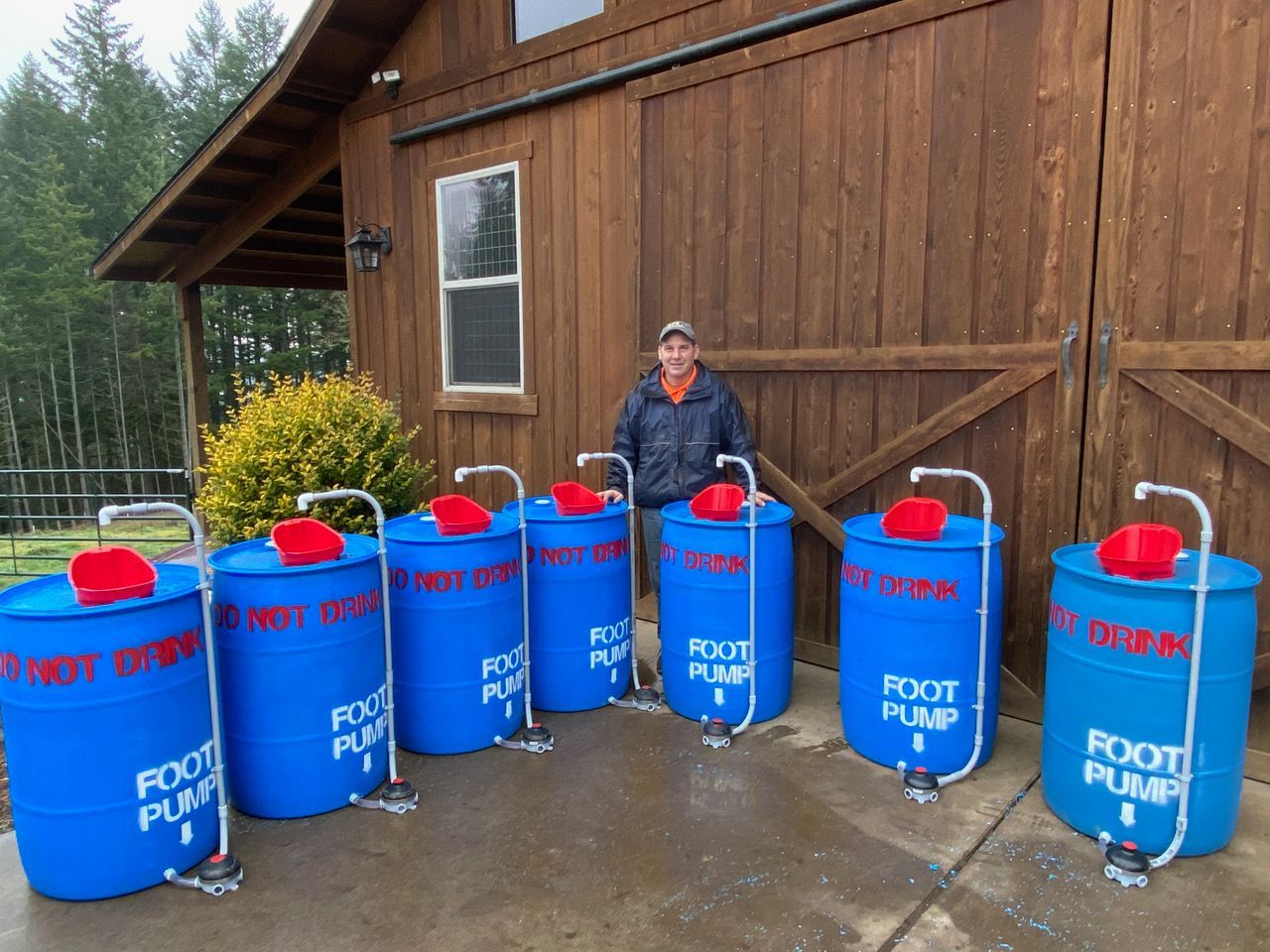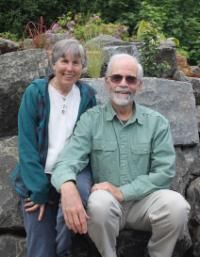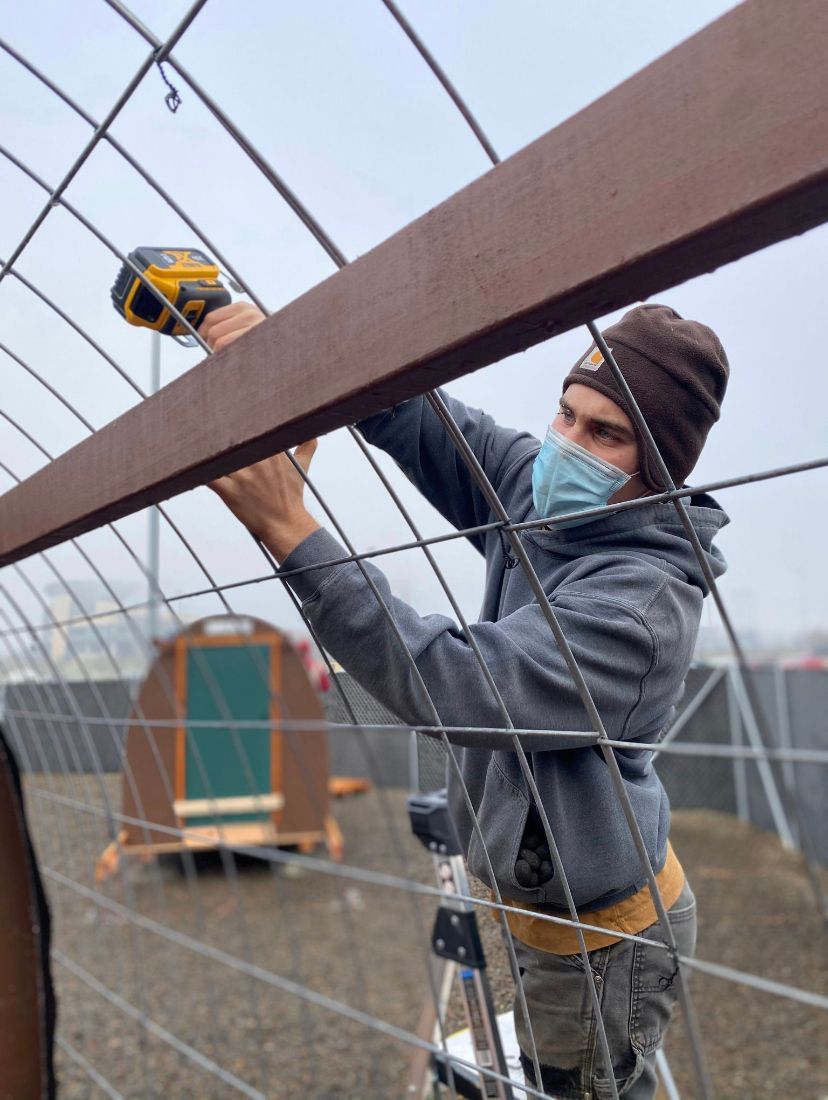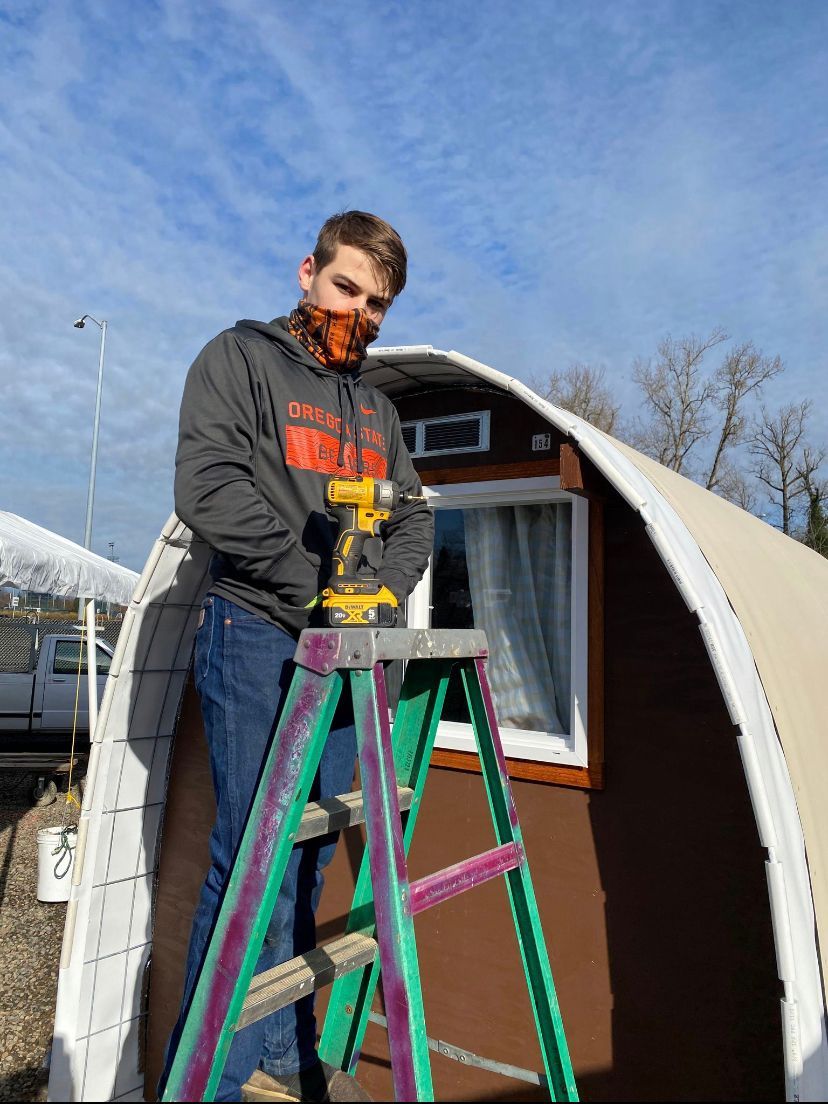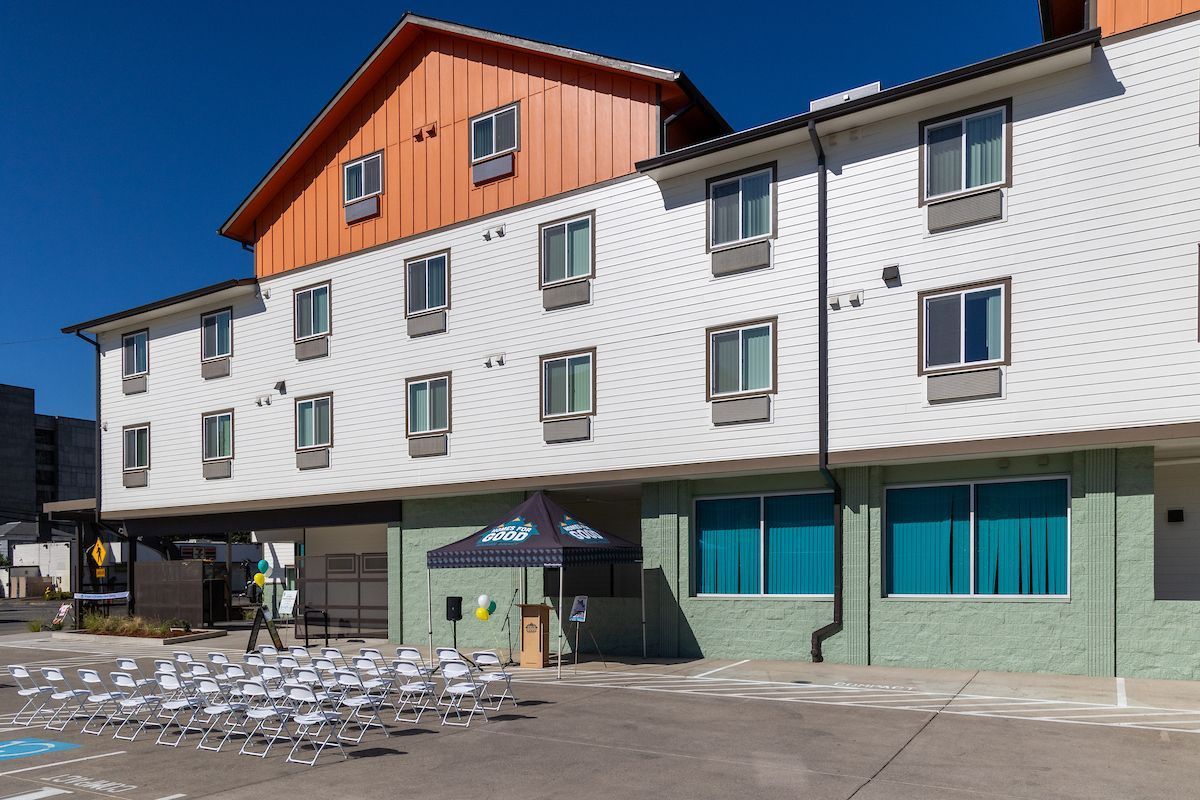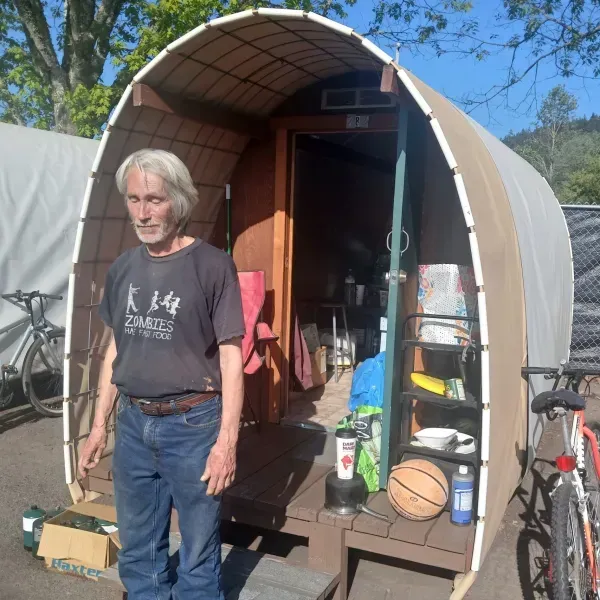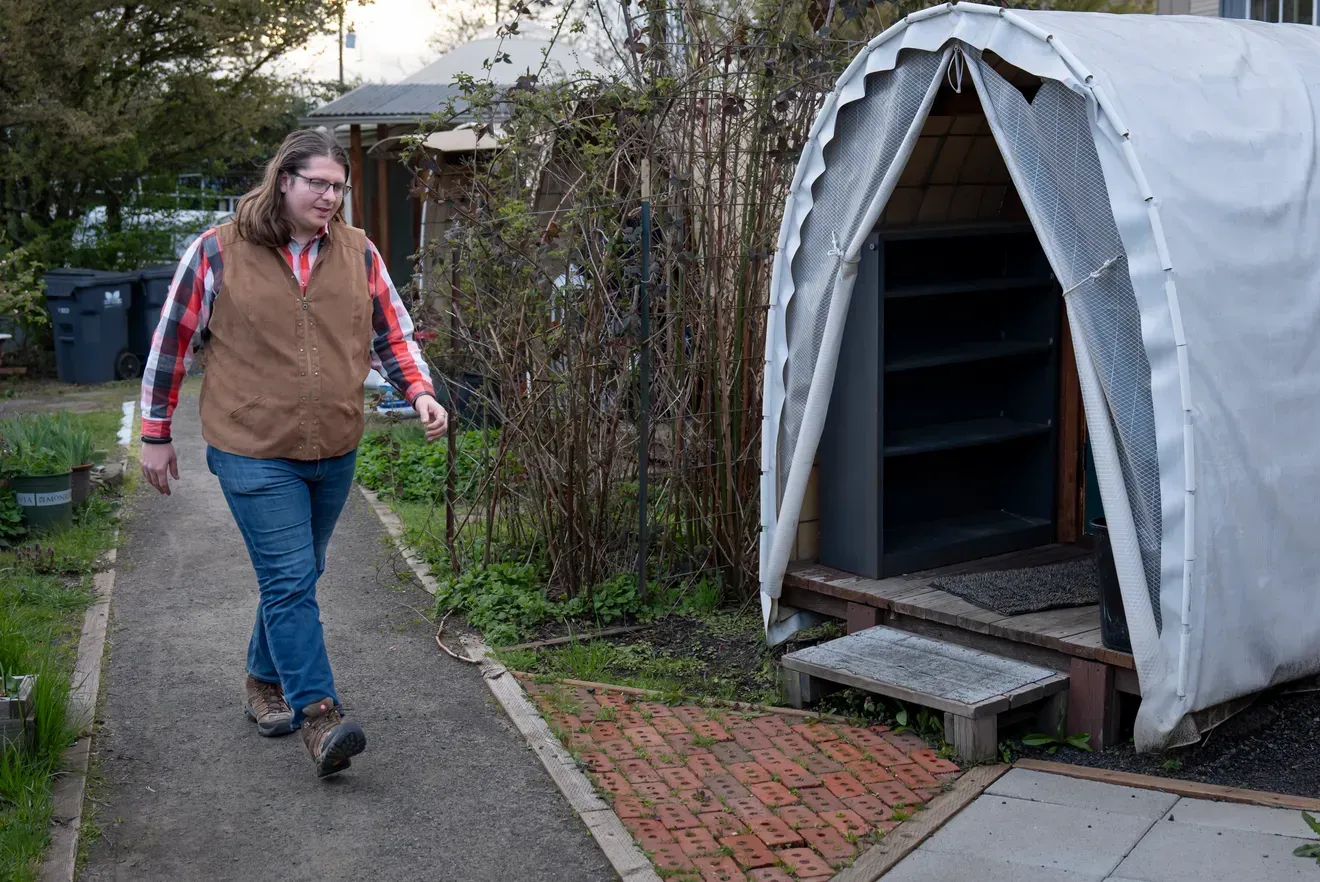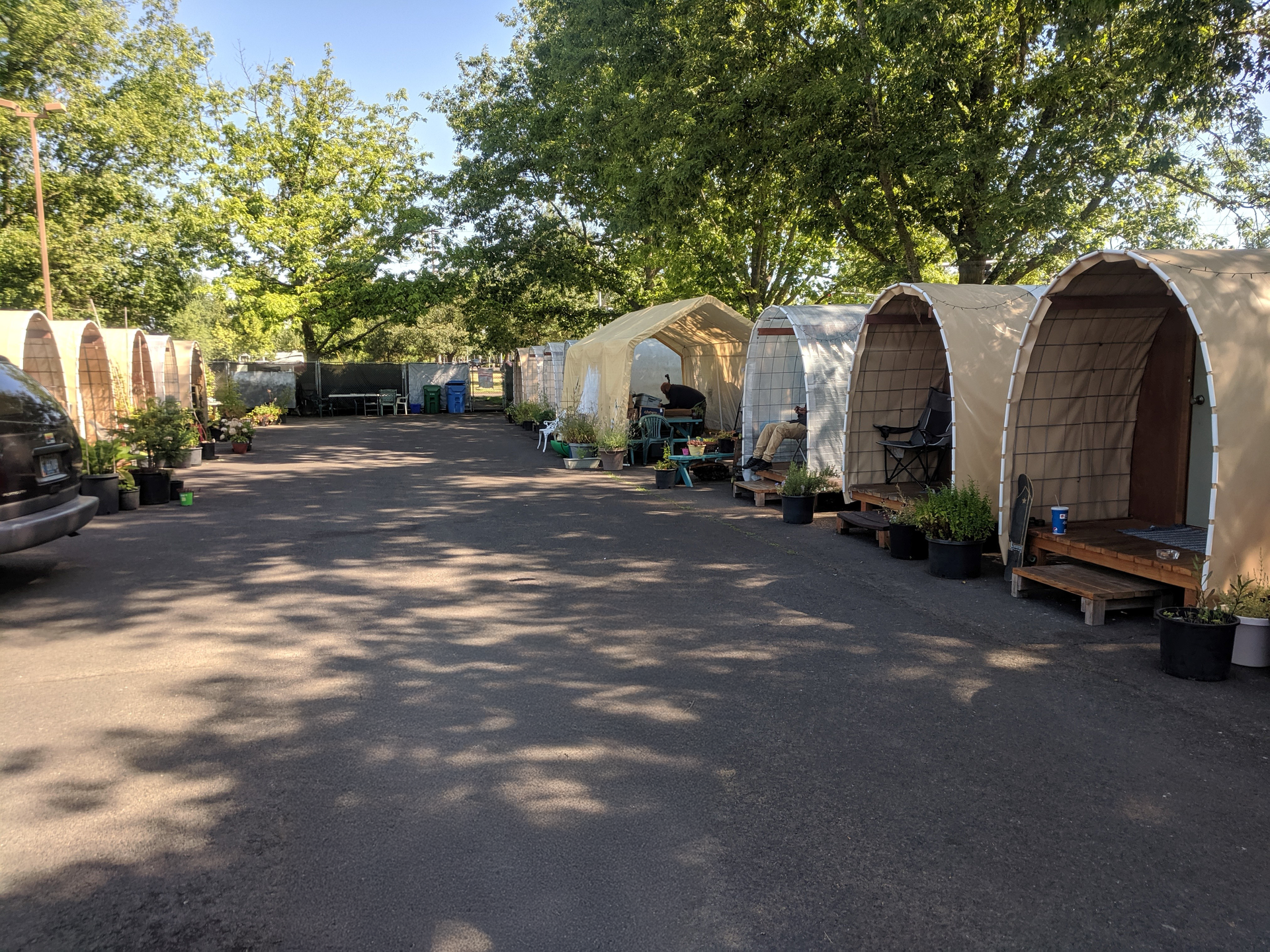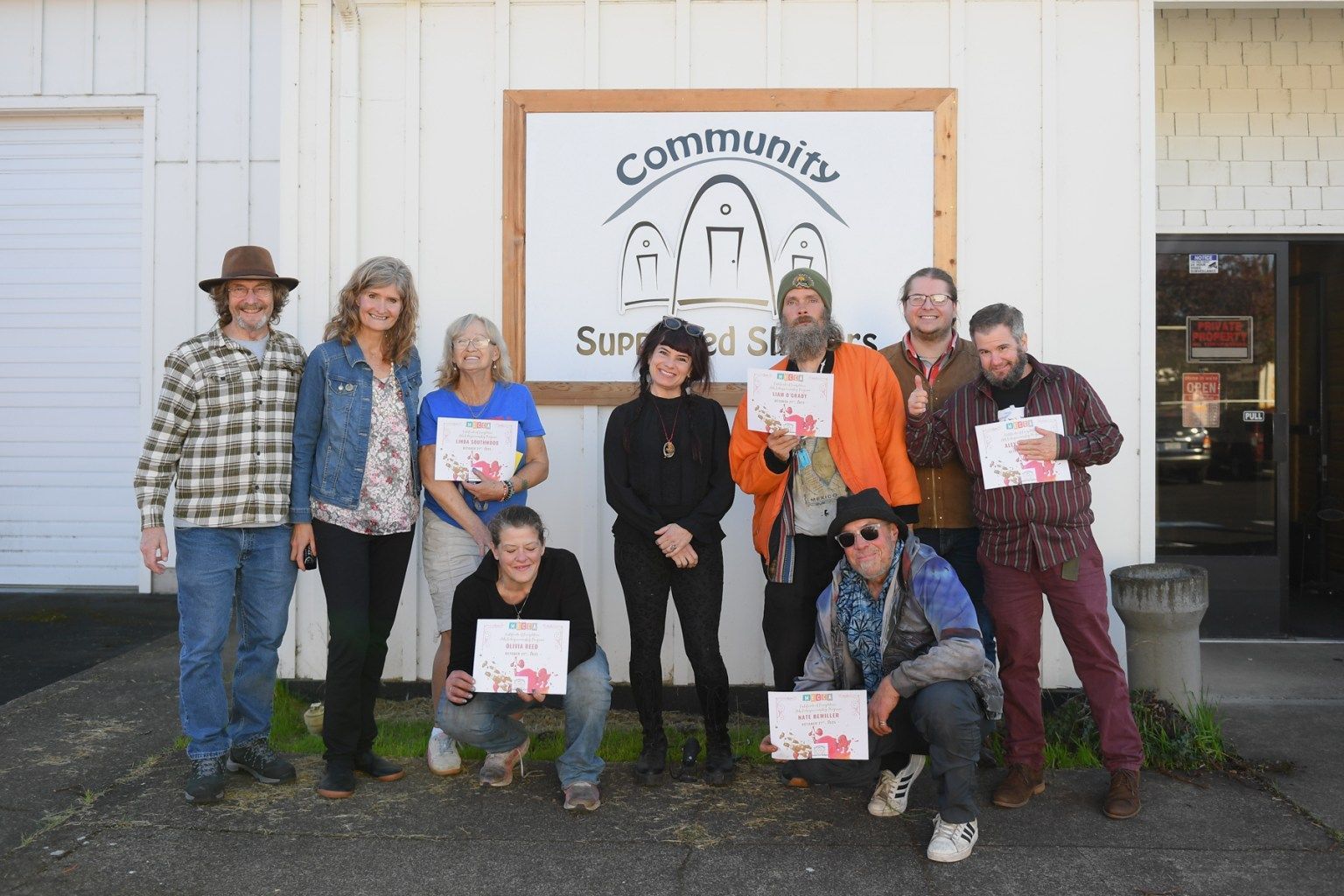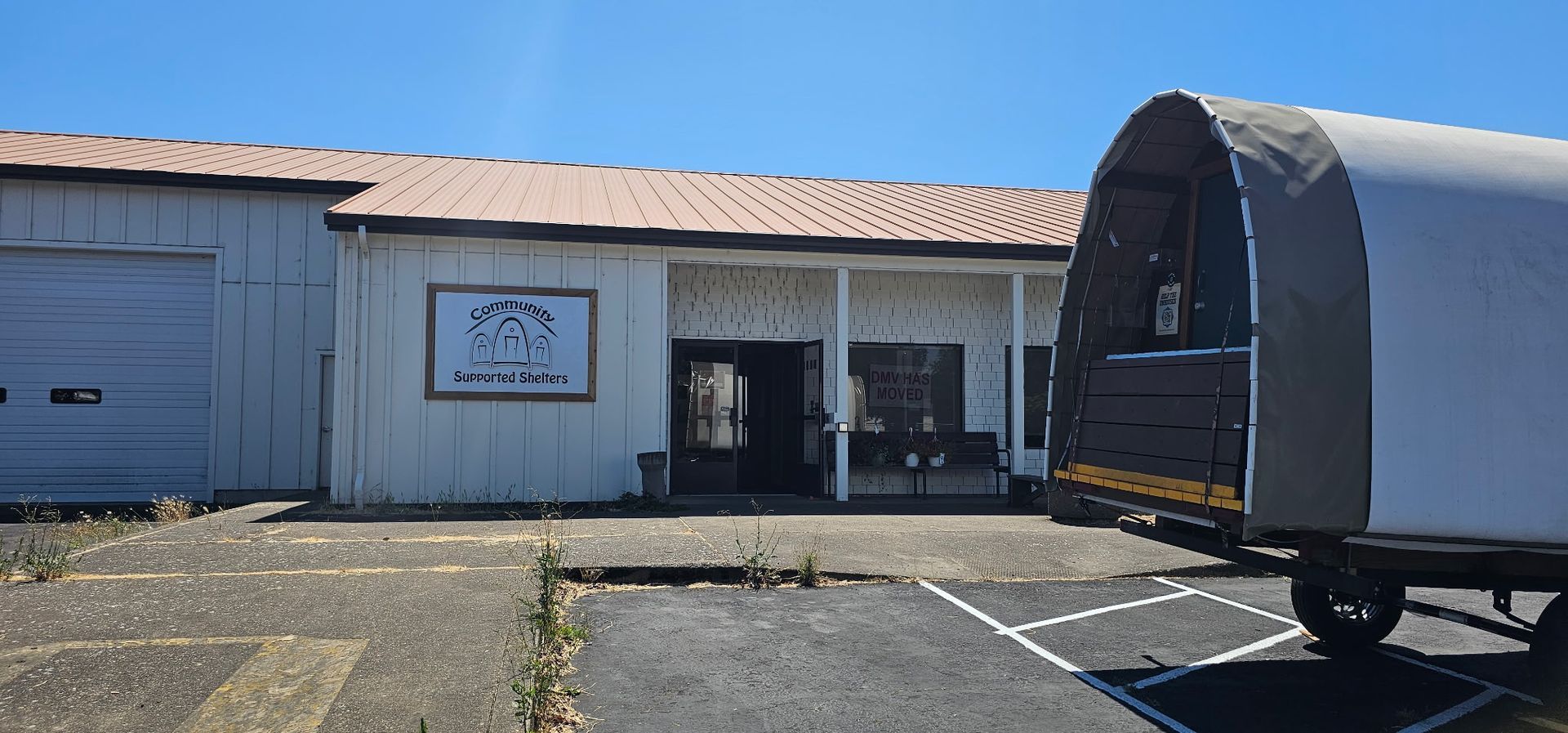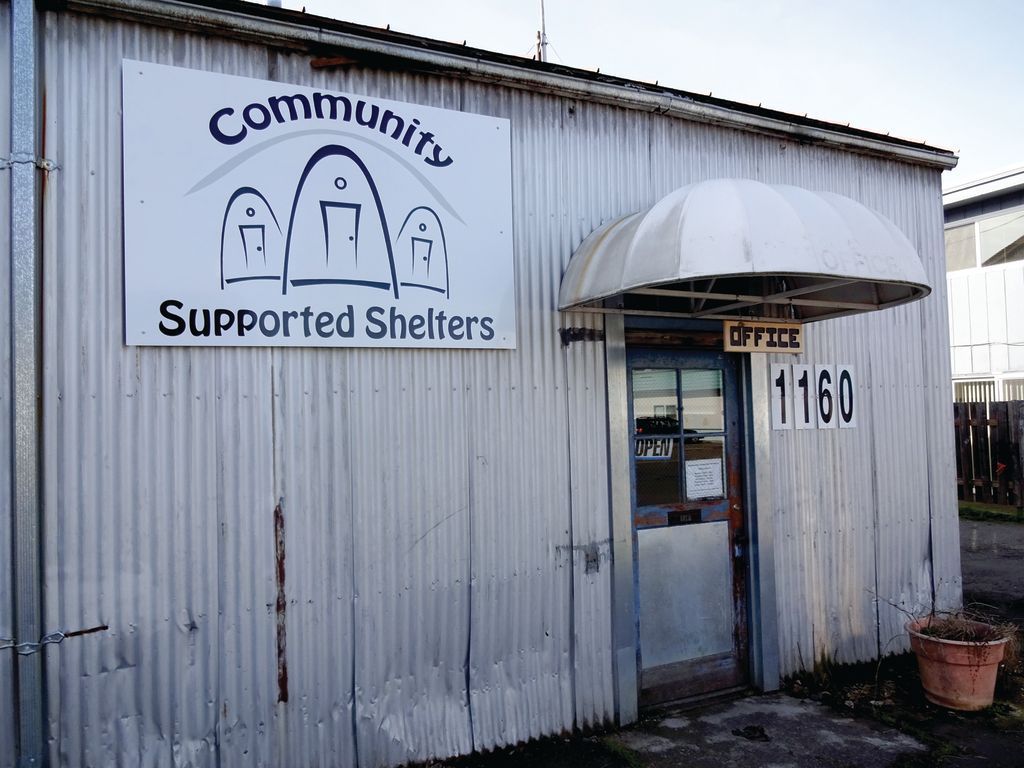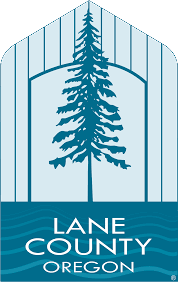Three Generations of Support: Getting the Next Thing Done for CSS
From garden vegetables to firewood to a common building in a Safe Spot to wood stoves to Hut construction to hand-washing stations, three generations of a Eugene and Corvallis family have left a deep and lasting mark on Community Supported Shelters.
It all started with grandparents John & Pem Winquist, spread to their son-in-law Scott Thibert, who got his sons Trevor, 19, and Brayden, 15, involved.
The Winquists met Kristin Fay de Buhr, CSS co-founder, on a tour of the Mission in the spring of 2015 and developed a friendship with her and CSS’s other co-founder Erik de Buhr. The Winquists were drawn to the vision that Erik and Fay had developed for CSS and the work that had already begun with Huts at churches around Eugene and Springfield and the first three Safe Spots in place.
John’s question led eventually to a phone call to somebody in Arkansas, who, after hearing the intended purpose of the shelter, said “yes.” But it took several more trips before the deal was finalized and they got the parts for an even bigger shelter than they originally expected.
Then they borrowed a trailer to haul the parts and hired people to put them together. But it was an open structure, so they went back to the same place a few times and scavenged through the scrap pile for wall pieces. Then they were back to the original challenge of replacing the smoldering fire pit. John placed an ad in the staff newsletter at Lane Community College, where he had worked for many years before retiring: “Wanted stoves for homeless folks.” He got three usable stoves for three camps. And, oh yeah, along the way, he learned to work with metal framing to install windows in the common building.
As Pem says, he just does the next thing that’s needed.
And that seems to run in the family. About the time CSS was getting started on its recent expansion of putting up nearly 100 Huts in five new Safe Spots and one Microsite, their daughter Jennifer Thibert, a school teacher at South Albany High School, and her husband Scott expressed their frustration that there was nothing like CSS in their home city of Corvallis to address the crisis of homelessness. Scott wondered if there was some way he could help CSS. John suggested Scott call Barr Washburn, who had just recently been hired as CSS construction coordinator—and, it just happens, was a long-time family friend.
On a Tuesday soon thereafter, Scott made the 45-mile drive with his oldest son Trevor, 19, to be part of the crew assembling Huts at the Lot 9 Safe Spot near Autzen Stadium. Scott spent twenty-seven years managing heavy civil construction projects like pipelines and tunnels before retiring to spend more time with his family. Trevor is a freshman at Arizona State University, studying construction management, hoping to pursue a career similar to his father’s. He was home for Thanksgiving vacation.
And what did the large-scale construction manager and his son who has grown up learning the profession from him think of the sometimes chaotic-appearing process of a bunch of mostly older volunteers assembling the somewhat idiosyncratic Conestoga Huts?
“I’ve managed some of the biggest construction projects in the state of Oregon,” Scott says. “And I was really impressed. I was blown away at how dialed in the process was. I love the design. It’s simple and aesthetically pleasing. They are simple to put together. You don’t have to be a professional carpenter. Any person, from my son who was probably the youngest person to the 80-year-old people working out there, can do it. And that was what was so cool about it to me because it could be a community-built structure.”
Trevor had a similar reaction. “You have a bunch of volunteers who come from various backgrounds. Some know how to swing a hammer, some don’t. But everybody’s out there willing to help. What impressed me most was the organization beforehand. The way the walls go together and everything fits,” he says, “was like building Legos more than like building a house.”
So, the younger two generations were busy with CSS projects, but Erik and Barr were worried about John, who along with Pem was carefully following the Covid safety procedures and hadn’t had a “next thing” to follow up on for a while.
Erik called and told John he had a job for him: hand-washing stations for the Safe Spots. But, Erik reassured him, “don’t worry, we’ve got a good plan.” John went to the shop to check out a prototype built by CSS’s former shop coordinator Skip Waddell. John’s assessment was that it was a clever design but expensive and not easily reproducible. So . . . it happened to be a Tuesday and Scott and Trevor were building Huts at Lot 9, so John went to see them to enlist them in the hand-washing project.
On their way back to Corvallis that day, Scott and Trevor stopped at a metal fabricating place in Albany to get some material for a project they were working on at home. And what do they see? A cool hand-washing station. And when they asked where it came from, guess where that would be? From a man making them in Corvallis. That man was a retired engineer who had made a bunch of them and put them on the streets of Corvallis, but the city made him remove them because they just drained on the ground. So he donated most of them to an Indian Reservation. But . . . he had made the components for 20 more and wasn’t feeling well enough to finish them, so he gave them to Scott. All they needed were plastic barrels like you might find at a brewery or a carwash. John and Pem found about eight; Scott found 20 more. So far, Scott has put together and delivered 17 completed hand-washing stations.
That’s the way things seem to work for this family when they get behind a good cause with their skills and good intentions and their drive to get the next thing done.
The family connection for doing good work goes a long way back. When they were younger, the Thibert boys joined John and Pem playing music at farmer’s markets and assisted living homes in Eugene and Corvallis to raise money for Linn Benton Food Share and Food for Lane County. They called their band The Generation Gap. Pem and John have also played music for the CSS Annual Dinner.
Trevor says his experience with CSS was eye-opening to see “the sheer number of people” CSS is trying to help and that “it was definitely an honor to be around everybody that was out there.” His family’s commitment to giving back to the community has “definitely put something good in my life” and he hopes to continue to find ways to do that.
Brayden says he and his dad talked about the importance of giving back to help less fortunate people on their drive home after working on the Huts. “So I’m trying to pick up on a few of those things when I have the time and the resources.” He runs a surprisingly professional firewood operation for a 15-year-old, according to John, and he’s thinking maybe he’ll take a load to one of the Safe Spots sometime. Just like his grandfather.


